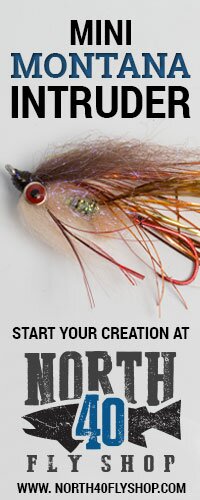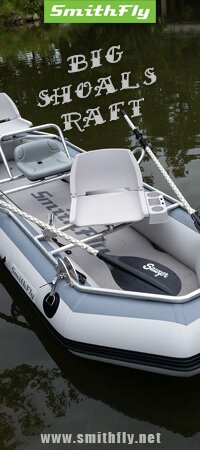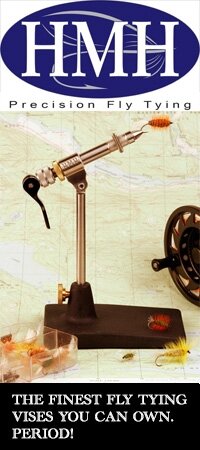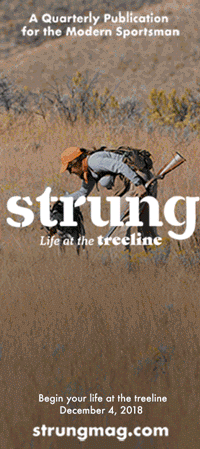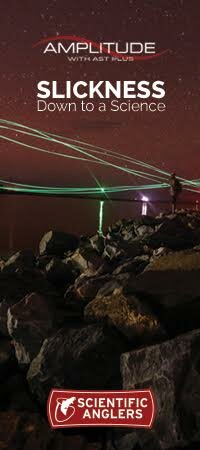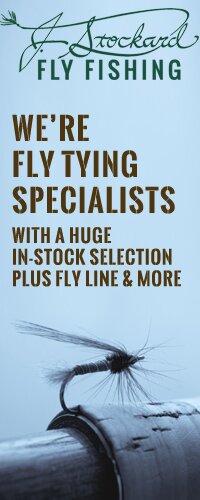Recently, I had a chance to chat with Josh Jenkins, R&D Manager at Scientific Anglers. Lately, there has been a trend brewing about using Spey type lines with one-handed rods for trout and bass fly fishing. This could be useful when you are in an area where a backcast is out of the question. It could also be something new and fun to try out on the stream.
Josh had some terrific answers to my questions and it will hopefully clear up some confusion about using these new Spey Lite Lines in a new way.
-Paul
q. First, do you believe the Spey Lite collection from SA can be used on a one-handed rod to cast streamers to trout and bass? If so, which Spey Lite line would you recommend?
a. The spey lite collection works great on both single and double hand rods. In general, the Skagit Lite (paired with the appropriate tip) will turn over larger flies than the Scandi Lite. The Skagit Lite system also makes it easy to switch out tips to fish different depths or speeds. Our Spey Lite family is unique in that some of the models include integrated running lines. So if I was stripping a streamer back to me, I wouldn’t have to worry about a loop-to-loop connection passing through the rod guides. My ultimate suggestion would be a Skagit Lite Integrated line with appropriate tips.
q. Could these lines be used in tight areas where a back cast would be difficult to perform or just for fun? In other words, would it make it easier to perform a roll cast, even with a large streamer tied on or to cast a streamer on a smaller weight rod?
a. All of our Spey Lite lines have short heads that excel in tight casting quarters. I watched one of our pro-staffers throw a tandem streamer rig with a 9’ #5 and a 180 grain Skagit Lite. There are definitely applications where these excel, but there are some anglers who pick up spey lines simply to challenge themselves and learn a new skill.
q. Are there other Spey casts that would be more productive with this type of setup than the roll cast?
a. Generally speaking, the Skagit Lite works best with sustained anchor casts, like the Snap-T or Perry Poke, where the tip and fly are statically “anchored” in the water. The Scandi Lite will work better with “Touch and Go” style casts where the forward stroke is made when the leader touches the surface of the water after forming the D-loop. It’s tough to explain in text, but I’d imagine that a brief YouTube search could reveal some helpful hints as to the difference in Skagit and Scandi style cast. All of the Spey Lite lines will roll cast, but you’ll get more distance out of a spey cast. These line can also be overhead cast like a shooting head by using a slow stroke and an open casting arc. One important note to remember is that the black marker at the back of all Spey Lite lines MUST be near or inside the tip top guide when casting.
q.If a fly fisher was interested in purchasing this line for this purpose, how would they determine what grain would work with what size rod? For example, if I have a 9 foot, 5 weight, which grain should I go with?
We have a chart with suggested grain weights for each application. All you need to do is match up the rod style and weight to determine with line works best for your rod!
| Grain Wt. Skagit and Scandi | SingleHand | Spey | Switch | Tips/leaders for Skagit |
| 150 | 3/4 | Sonar 10′ Leaders | ||
| 180 | 4/5 | 3/4 | Sonar 10′ Leaders | |
| 210 | 5/6 | 3 | 4 | Sonar 10′ Leaders |
| 240 | 6/7 | 3/4 | 4/5 | Sonar 10′ Leaders |
| 270 | 7/8 | 4 | 5 | Sonar 10′ Leaders/8′ 80gn TC Tips |
| 300 | 8 | 4/5 | 5/6 | 8′ 80gn TC Tips |
| 330 | 8/9 | 5 | 6 | 8′ 80gn TC Tips/10′ 120gn TC Tips |
| 360 | 8/9 | 5/6 | 6/7 | 8′ 80gn TC Tips/10′ 120gn TC Tips |
q. Do you think this would even work well with a small weight fiberglass rod? Possibly a 2 or 3 weight?
a. Slower rods generally pair better with lighter lines. The above suggestions are based on standard carbon rods. My guess is that our 150 grain size may be a bit much for a 2/3 weight glass rod.
q. If trout fishers wanted to use this type of setup for dry fly fishing, I’m assuming the Skagit lines would be too heavy and make quite a splash, but possibly the Scandi line might work for this application?
a. You’re spot on, the Scandi Lite works better for dries, small nymphs, and soft hackles.
q. Is the line all in one? All one needs to do, is add a leader to the line?
a. The Skagit Lite lines MUST be used with a TC TIP or SONAR LEADER (see chart above). I’ll usually use a 3-4’ section of tippet to connect the fly to the TC Tip or Sonar Leader. Scandi Lite lines will work best with a standard 9’ tapered leader. Shorter leaders (~7.5’) work better for larger flies with the Scandi Lite.
q. Can you back cast this line just as you could a normal fly line?
a. You can cast these lines overhead as well, but the casting stroke is different than a standard single hand line. As I said above, the black marker at the back of the head on all Spey Lite lines MUST be near or inside the tip-top guide on the rod when starting a cast. Basically, you want to limit the amount of running line that is outside of the tip-top guide. The black markers are there to make gauging overhang easier. When you cast these lines overhead, you want to use a much slower stroke, don’t try to overpower the line.
q. Are there any other thoughts about this that you might have Josh?
a. I think my last point would be to restate an answer above. These lines definitely have a specific application where they exceed, but they are also a great option for a caster who wants to try something new and learn!
https://www.scientificanglers.com/product-category/fly-lines/spey-lite/







